How can design help maintain social cohesion during COVID-19? Moreover, how can designers capitalize on disruptions like the current pandemic to implement lasting improvements to our cities?
Both the novel coronavirus and global climate change at large have recently emphasized the value of shared outdoor urban spaces as key venues for safely gathering and exchanging to support personal and communal health and wellbeing, as well as economic vitality.
The city of Barcelona has acknowledged this fact by permitting approximately 2,600 new restaurant terraces, the majority of which have been allowed to occupy areas previously reserved for motor vehicles.
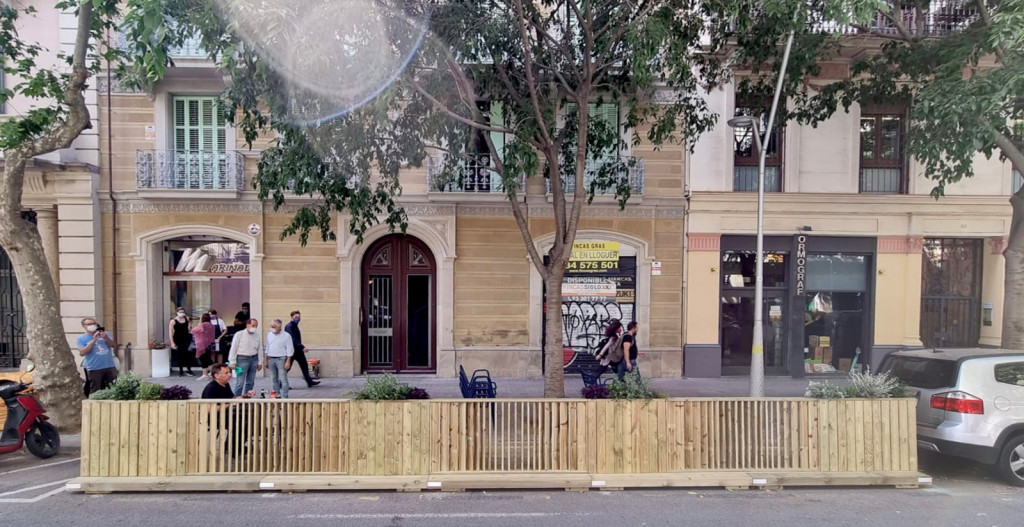
Such reclamations of motor vehicle lanes for pedestrian and multi-modal use are especially compelling not only because they provide more space for exterior gatherings, thereby reducing the risk of contagion, but also because they represent a shift toward making our cities more humane and ecological by prioritizing people over cars in general. However, these realisations and policy changes have revealed a lack of appropriate methods, products and services available for completing transformations with adequate speed, flexibility and quality at reasonable cost.
Current strategies include, at one end: informal adaptations involving pavement markings or coverings; temporary traffic barriers; and lightweight structures like kiosks, stalls, and so forth. Referred to as tactical urbanism, the advantages of this approach are low cost, flexibility, rapid deployment and ease of unskilled citizen engagement. However, the significant disadvantages are lack of quality, unsustainability, and in some cases dangerous conflicts with essential urban flows or functions. Tactical urbanism interventions endure from hours to weeks, exceptionally months.
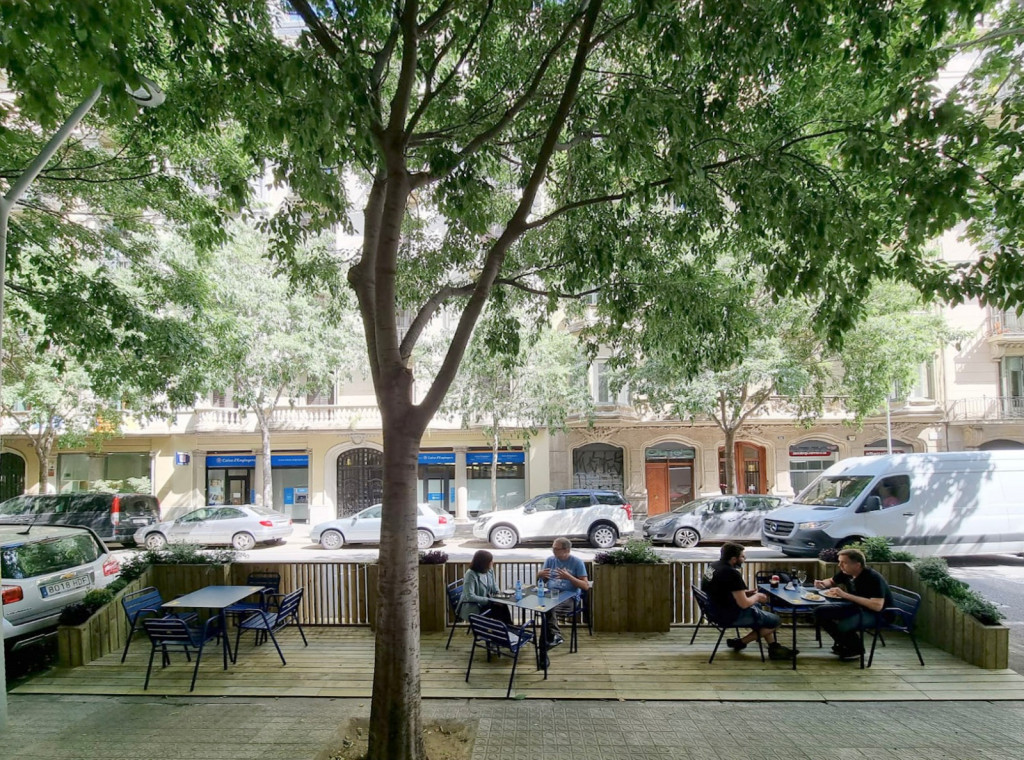
At the other end is full formal redesign and renovation, including: standardised competition or bidding procedures; thorough review and permitting processes; and removing/replacing hardscape surfaces, furnishing, plantings, infrastructures, etc. Formal urbanism interventions can of course result in high-quality results lasting years to decades, but at high-cost, with low flexibility, low citizen engagement and extended disruptive construction. The urgent and dynamic nature of present challenges thus often makes them unfeasible. The ‘missing middle’ – high-quality, flexible, quickly realisable, participatory, cost-effective transformations lasting months to years – were uniquely investigated by FURNISH, a 2020 project funded by the European Institute of Innovation and Technology Urban Mobility group’s COVID-19 Response Call which co-designed, implemented and tested digitally fabricated prototypes for improving the public realm in 5 European cities.
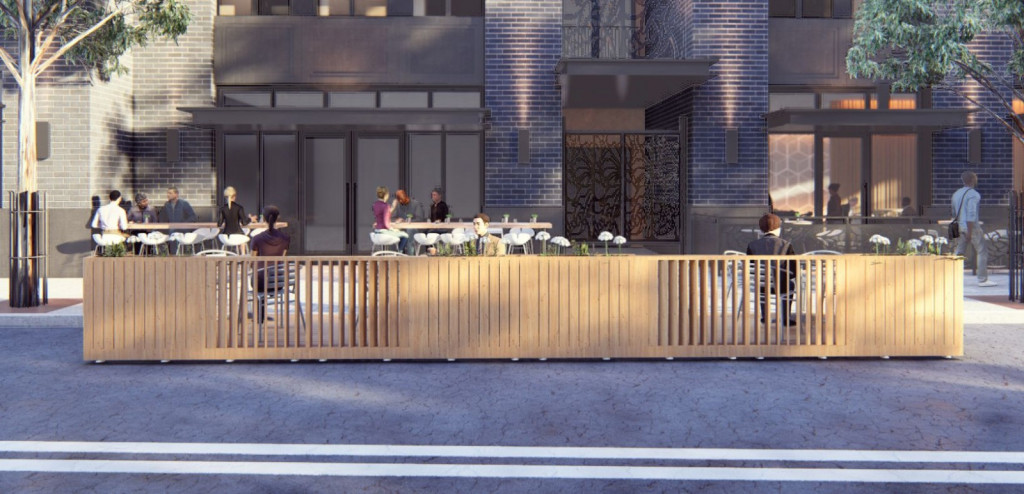
As a leading partner of the FURNISH consortium, IAAC’s Valldaura Labs installed the Open Terrace system built using only sustainably harvested local timber at The Coffee House on Barcelona’s Carrer de València.
Recognising the success of this prototypical installation, the city council of Barcelona then invited IAAC, along with a handful of other design organisations, to continue developing platform systems suitable for mass production and deployment within the city.
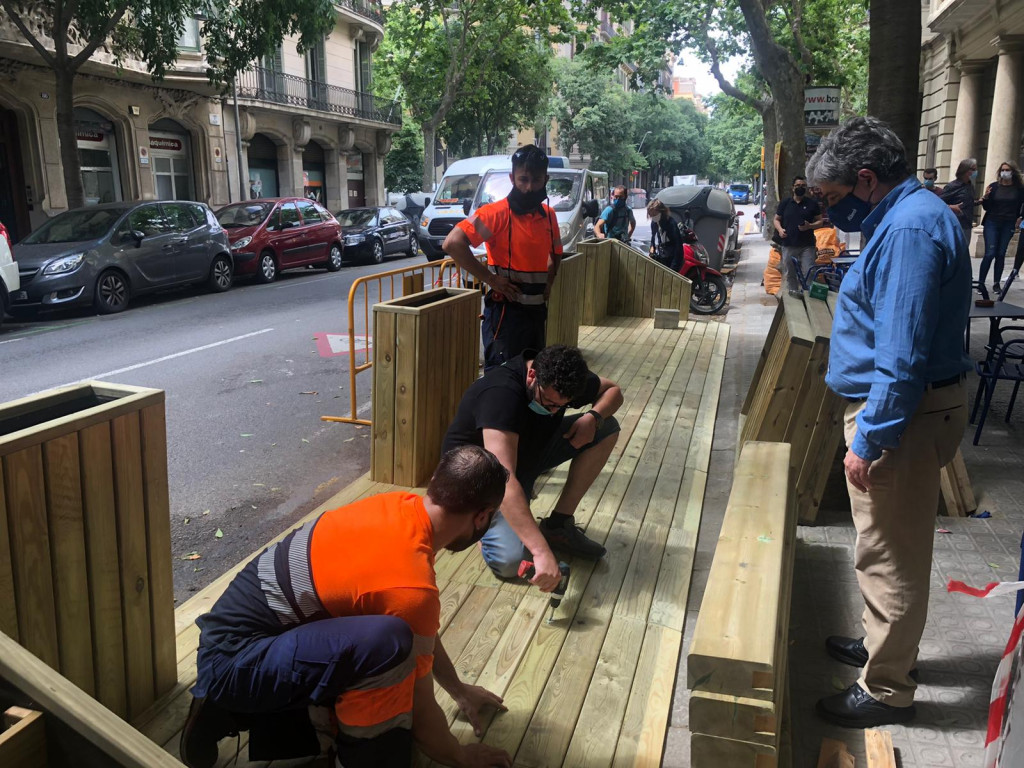
In collaboration with the lumber provider Alberch and the urban planter specialists Hortalia, IAAC’s Valldaura Labs therefore designed a new and improved version of the terrace prototype first conceived by FURNISH. Still relying on sustainably harvested local timber, (now thermally treated to maximise its life-span without the use of toxic chemical additives) the revised system also incorporates parametric design in a modular railing, with progressively rotating vertical slats to vary the degree of transparency between the dining area and the street. Opaque portions of the railing host planting boxes, enlivening the terrace with vegetation which additionally contributes to improving the air quality and increasing the biodiversity of the city.
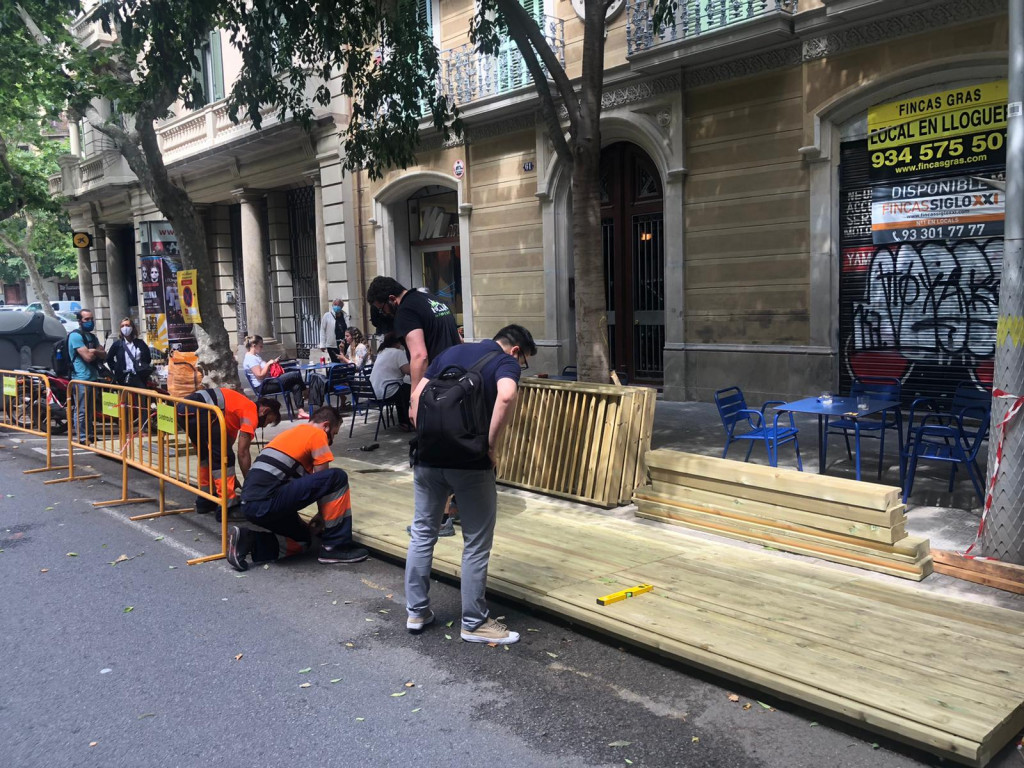
The updated prototype was installed at La Marinada restaurant on Carrer de Casp in June. While the implemented version shelters a linear terrace occupying what was previously a parking lane, the system is designed to easily adapt to various shapes, sizes and railing arrangements.